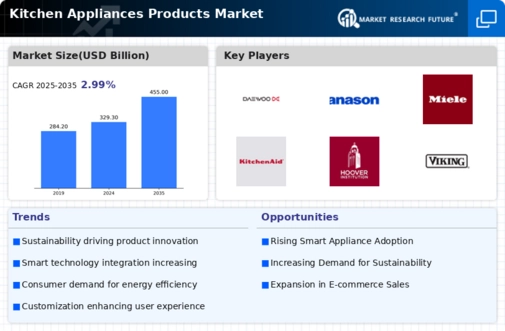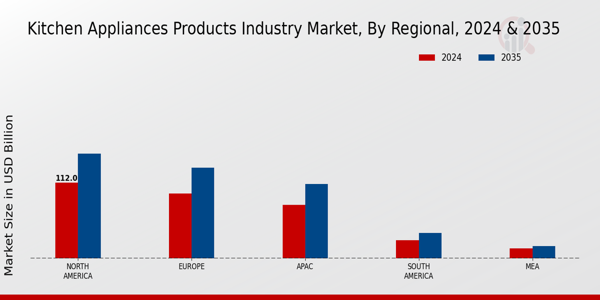The Kitchen Appliances Products Market is characterized by a diverse range of players that offer a plethora of innovative products designed to enhance convenience in modern cooking and food preparation. This market has seen significant evolution, driven by advancements in technology, increasing consumer expectations, and the growing trend toward energy efficiency and smart home integration. Competitive insights within this sector suggest a robust rivalry among manufacturers as they strive to differentiate their offerings, enhance product features, and reduce pricing to capture consumer interest.
The market is segmented into various categories including cooking appliances, refrigeration, dishwashing machines, and small kitchen gadgets, each contributing uniquely to the industry's growth potential. Furthermore, consumer preferences have shifted toward multifunctionality and smart technology, compelling companies to adopt cutting-edge solutions to resonate with the evolving demands of the market.
Daewoo Electronics has established a strong presence in the Kitchen Appliances Products Industry with its diverse product portfolio that caters to a wide array of consumer needs. Known for its continual innovation, Daewoo has developed a variety of kitchen appliances, including refrigerators, ovens, and microwaves, which emphasize user functionality and aesthetic design. The company benefits from a strong emphasis on advanced technology, such as smart appliance capabilities that integrate seamlessly with connectivity features, enhancing the user experience. Daewoo Electronics also prides itself on its commitment to energy efficiency, appealing to environmentally conscious consumers.
The brand's recognition in markets is bolstered by its competitive pricing strategy that offers quality products without excessive financial strain on consumers. This unique combination of innovation, quality, and affordability positions Daewoo Electronics as a formidable contender in the kitchen appliances market.
Frigidaire, a subsidiary of a larger parent company, enjoys considerable recognition and market presence in the Kitchen Appliances Products Industry, characterized by a long-standing commitment to reliable and user-friendly products. The brand has effectively capitalized on its rich heritage of producing high-quality kitchen appliances, which include a wide range of refrigerators, cooking stoves, and dishwashers. Frigidaire's strength lies in its innovative approach to product design, prioritizing functionality, and efficiency to meet contemporary demands, including smart technology integration. Further, the company emphasizes durability and performance, which resonates well with consumers seeking long-term investment in kitchen appliances.
Additionally, Frigidaire's extensive distribution network ensures that its products are widely accessible, catering to the varied preferences of customers. This has solidified its reputation as a trustworthy name in the kitchen appliances market, allowing Frigidaire to maintain a competitive edge in an ever-evolving industry landscape.


















Leave a Comment